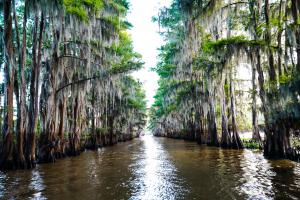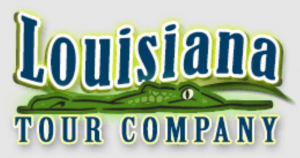The Cajun Connection: How Swamps Shaped Louisiana Culture
Milton Walker Jr., owner of Louisiana Tour Company, reflects on the link between the swamps and Cajun heritage. “The swamp is where the culture took root. It fed generations, sheltered families, and shaped the music, language, and lifestyle that define Louisiana,” said Walker.
Swamp tours offered across South Louisiana often reveal more than wildlife and vegetation. They uncover the story of a people who turned challenging terrain into a way of life.
A Refuge for the Displaced
The Cajuns, descendants of French-speaking Acadians exiled from Canada in the 18th century, settled in the swamplands of South Louisiana after being expelled from Nova Scotia by British forces. The region’s bayous, marshes, and swamps—once seen as inhospitable—offered isolation and protection. These wetlands became a refuge where communities could preserve language, traditions, and autonomy, largely untouched by outside influences for generations.
Settlements grew along the waterways, forming tight-knit communities that adapted to the rhythms of nature. The swamps weren’t a barrier—they were home.
Culture Rooted in the Environment
Every aspect of Cajun culture was shaped by the swamp environment. Fishing, trapping, and hunting became not just ways to survive but ways to celebrate abundance and ingenuity. Crawfish boils, gumbo recipes, and smoked meats all originated from ingredients found in the region. These culinary traditions remain central to Louisiana identity.
Wood from cypress trees was used to build homes, pirogues (flat-bottomed boats), and tools. Knowledge of the tides, animal behavior, and plant cycles was passed down through generations. The swamp demanded practical knowledge, and Cajun families built entire livelihoods around that wisdom.
Language and Storytelling
The relative isolation of swamp communities preserved the Cajun French language far longer than in more urban settings. This language, mixed with English and Creole influences, is still heard in small towns and during cultural events. Swamp life also gave rise to a strong oral tradition. Stories, folk tales, and music were shaped by life on the water—stories of survival, family, the supernatural, and humor.
Accordion-driven Cajun music and swamp pop developed from these traditions. Lyrics often reflected daily life, joys, hardships, and the ever-present relationship between people and their environment. The songs became an archive of cultural memory and pride.
A Changing Landscape
The swamps that shaped Cajun life are now facing threats from coastal erosion, rising sea levels, and human activity. Canals carved for navigation and oil access disrupted natural water flow. Saltwater intrusion has devastated marshlands, affecting wildlife and plant life that communities once relied on.
Despite these changes, many Cajun families remain connected to the swamp, adapting as they always have. Some have transitioned to ecotourism, guiding visitors through the waterways and sharing their stories, offering an authentic view into the relationship between land and culture.
The Role of Swamp Tours in Cultural Preservation
Swamp tours have evolved beyond sightseeing. They now serve as platforms for education and cultural transmission. Guides share more than wildlife facts—they explain the traditional uses of cypress trees, describe family trapping routes, and recount tales passed down from elders.
These experiences offer a glimpse into the Cajun way of life, rooted deeply in land stewardship and communal identity. Tours also provide income opportunities for locals, allowing some traditions to survive economically while showcasing the richness of Louisiana culture.
Milton Walker Jr. explains, “The tour isn’t just about gators or moss-covered trees. It’s about explaining why those trees matter, what the bayou gave to the people who lived here, and why preserving it all still matters today.”
Connecting Past and Present
Today’s Louisiana continues to evolve, but the impact of the swamp remains imprinted on its people, food, language, and rhythm. Urban areas may rise, but many residents still trace their roots back to a swamp-side porch or a pirogue gliding silently across still water at sunrise.
The story of the Cajun connection to the swamp is one of adaptation, creativity, and deep respect for the land. It is a story that still unfolds every day in the marshes, bayous, and cypress groves across the state.
Morgan Thomas
Rhino Digital, LLC
+1 504-875-5036
email us here
Visit us on social media:
Facebook
Legal Disclaimer:
EIN Presswire provides this news content "as is" without warranty of any kind. We do not accept any responsibility or liability for the accuracy, content, images, videos, licenses, completeness, legality, or reliability of the information contained in this article. If you have any complaints or copyright issues related to this article, kindly contact the author above.
Healthy Horizons CEO and COO Recognized for Maternal Health and STEM Advocacy with Stevie® Awards
Interscan Corporation Hosts Live Webinar on Navigating New EPA Ethylene Oxide Regulations for Healthcare Sterilization
Common Room Roasters Continues Partnership with Gjelina Group's Expansion
Kalendarium
Więcej ważnych informacji
 Jedynka Newserii
Jedynka Newserii

 Jedynka Newserii
Jedynka Newserii

Prawo

400 gmin w Polsce nie ma na swoim terenie apteki i sytuacja co roku się pogarsza. Samorządowcy apelują o zmiany w prawie
W ciągu ostatnich kilku lat, od wejścia w życie przepisów Apteka dla Aptekarza, zamknięto ponad 2,2 tys. aptek w Polsce, a około 400 gmin nie posiada na swoim terenie apteki. Trzech na pięciu Polaków, aby kupić leki, musi się udać po nie do innej miejscowości. Sygnatariusze listu otwartego do minister zdrowia przygotowanego przez Koalicję „Na pomoc niesamodzielnym” apelują o zmianę priorytetów w legislacji dotyczącej rynku aptek. Wzywają też do podjęcia systemowych działań przeciwdziałających wykluczeniu zdrowotnemu ze względu na miejsce zamieszkania.
Bankowość
1 mln zł na innowacyjne rozwiązania dla miast. Granty mogą otrzymać naukowcy i start-upy

Niskoemisyjny transport, oszczędzanie zasobów, zarządzanie odpadami czy walka z zanieczyszczeniami – to część wyzwań, które stawia przed miastami szybko rosnąca liczba mieszkańców. Na przynajmniej część z nich odpowiedzią mogą być innowacje, które mogą pomóc także w adaptacji miast do zmiany klimatu. To właśnie innowacyjnych rozwiązań wspierających zrównoważony rozwój miast poszukuje ING Bank Śląski w nowej edycji Programu Grantowego. Do młodych naukowców i start-upów trafi 1 mln zł.
Telekomunikacja
Obciążenia regulacyjne uderzają w branżę nowych technologii i start-upy. To może hamować innowacje

Nadmierne obciążenia biurokratyczne i wysokie koszty prawne są wskazywane przez wiele start-upów jako bariery, które są najtrudniejsze do pokonania w ich działalności – wynika z raportu „Polskie Startupy 2024”. To sprawia, że część z nich szuka możliwości przeprowadzki za ocean – ze stratą dla innowacyjności i konkurencyjności polskiej gospodarki. Również w branży ICT o potrzebie deregulacji mówi się od lat, bo to przeszkadza jej w globalnym wyścigu technologicznym.
Partner serwisu
Szkolenia

Akademia Newserii
Akademia Newserii to projekt, w ramach którego najlepsi polscy dziennikarze biznesowi, giełdowi oraz lifestylowi, a także szkoleniowcy z wieloletnim doświadczeniem dzielą się swoją wiedzą nt. pracy z mediami.








.gif)

 |
| |
| |
|